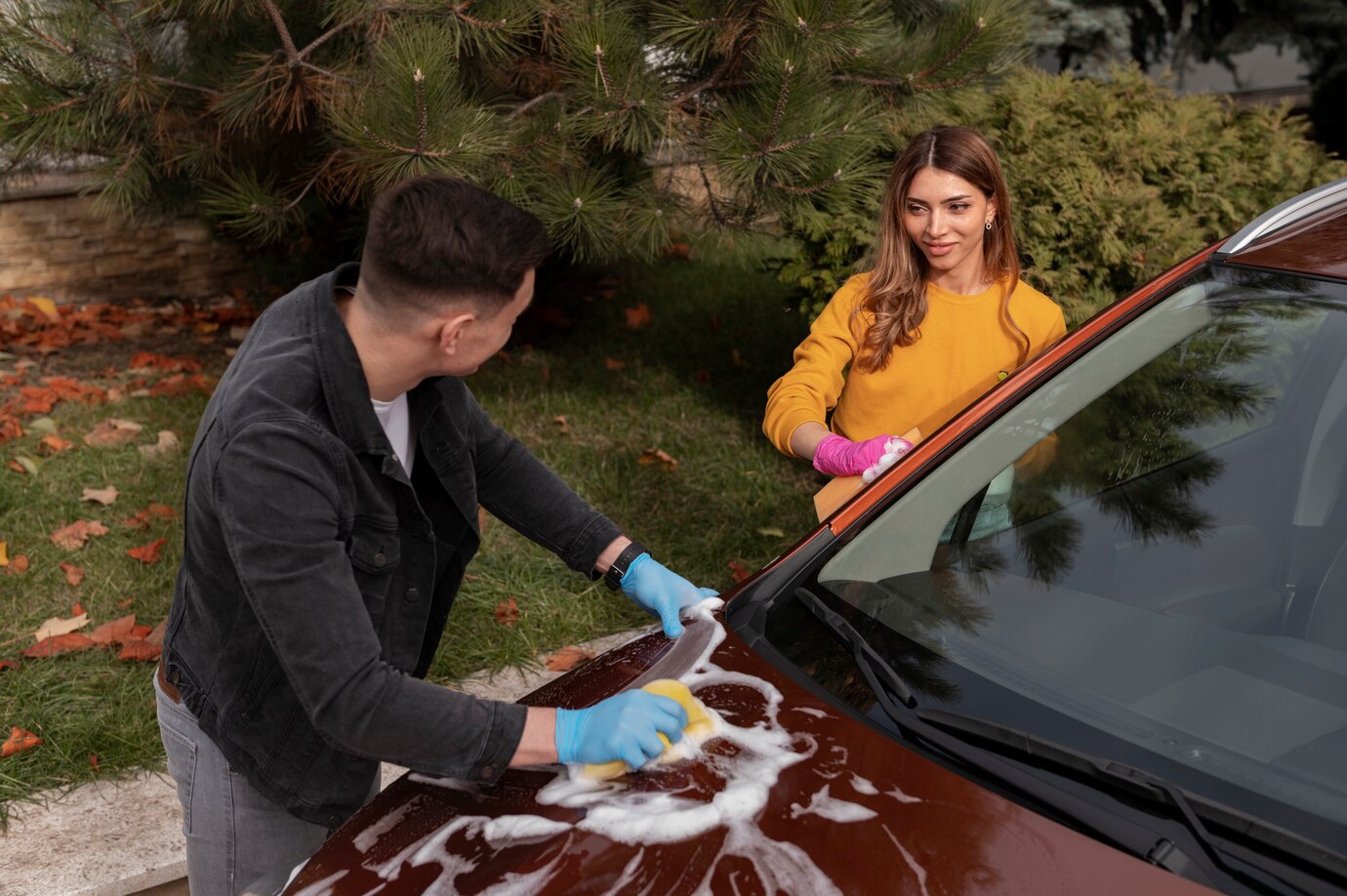Tree sap can be a nightmare for car owners. It’s sticky, stubborn, and can damage your paint if left untreated. Whether you park under trees daily or occasionally find sap droplets on your vehicle, knowing how to remove it safely is crucial.
In this guide, we’ll cover:
✔ Why tree sap is harmful to your car
✔ Safe and effective removal methods
✔ Preventative tips to avoid future sap damage
✔ Common mistakes to avoid
By the end, you’ll have a clear, step-by-step plan to keep your car sap-free and looking pristine.
Why Tree Sap is Bad for Your Car
Tree sap isn’t just an eyesore—it can cause long-term damage if ignored. Here’s why:
-
Stains Paint: Sap hardens over time, leaving behind yellow or brown stains.
-
Attracts Dirt: The sticky surface traps dust and debris, making cleaning harder.
-
Damages Clear Coat: Prolonged exposure can eat through the protective layer, leading to costly repairs.
-
Hardens in Sunlight: Heat makes sap bond stronger with the paint, making removal tougher.
The sooner you remove sap, the better. Let’s explore the best ways to do it safely.
Best Ways to Remove Tree Sap from Your Car
1. Rubbing Alcohol (Isopropyl Alcohol)
Best for: Fresh or dried sap
How it works: Alcohol breaks down sap’s sticky properties without harming paint.
Steps:
-
Test a small area first to ensure no discoloration.
-
Soak a microfiber cloth in rubbing alcohol (70% or higher).
-
Gently dab the sap—avoid rubbing harshly.
-
Wipe clean with a damp cloth and dry.
Tip: For stubborn spots, let the alcohol sit for 30 seconds before wiping.
2. WD-40
Best for: Thick, hardened sap
How it works: WD-40’s lubricating properties loosen sap for easy removal.
Steps:
-
Spray WD-40 directly onto the sap.
-
Let it sit for 1-2 minutes.
-
Wipe away with a soft cloth.
-
Wash the area with car soap to remove residue.
Warning: Don’t leave WD-40 on paint too long—it can strip wax.
3. Baking Soda Paste
Best for: Gentle, scratch-free cleaning
How it works: Baking soda acts as a mild abrasive.
Steps:
-
Mix baking soda with water to form a paste.
-
Apply to the sap with a microfiber cloth.
-
Rub gently in circular motions.
-
Rinse and dry.
4. Mayonnaise or Peanut Butter
Best for: Small, stubborn sap spots
How it works: The oils break down sap naturally.
Steps:
-
Apply a small amount to the sap.
-
Let sit for 5-10 minutes.
-
Wipe off with a soft cloth.
-
Wash the area to remove oily residue.
5. Commercial Sap Removers
Best for: Heavy sap buildup
Recommended products:
-
Turtle Wax Bug & Tar Remover
-
Goo Gone Automotive
-
3M Adhesive Remover
Steps:
-
Follow the product instructions.
-
Apply, let sit, then wipe clean.
-
Wash and wax the area afterward.
What NOT to Do When Removing Tree Sap
❌ Don’t use sharp objects (razors, knives)—they’ll scratch paint.
❌ Avoid harsh chemicals like acetone or nail polish remover—they strip paint.
❌ Don’t scrub aggressively—this can cause swirl marks.
❌ Never leave sap untreated—it gets harder to remove over time.
How to Prevent Tree Sap from Sticking to Your Car
-
Avoid Parking Under Trees – Especially pine, maple, and oak trees, which produce heavy sap.
-
Use a Car Cover – Protects against sap, bird droppings, and UV rays.
-
Apply Wax or Sealant – A good layer of wax makes sap easier to remove.
-
Wash Your Car Regularly – Removes sap before it hardens.
Final Thoughts
Removing tree sap quickly is key to protecting your car’s paint. Whether you use rubbing alcohol, WD-40, or a commercial remover, always test a small area first and work gently. Prevention—like parking smart and waxing regularly—can save you time and hassle.
FAQs
Can tree sap permanently damage car paint?
Yes, if left for weeks, it can etch into the clear coat, requiring professional correction.
Does vinegar remove tree sap?
Yes, but it’s less effective than alcohol or specialized removers.
How often should I wax my car to prevent sap damage?
Every 3-6 months for optimal protection.










